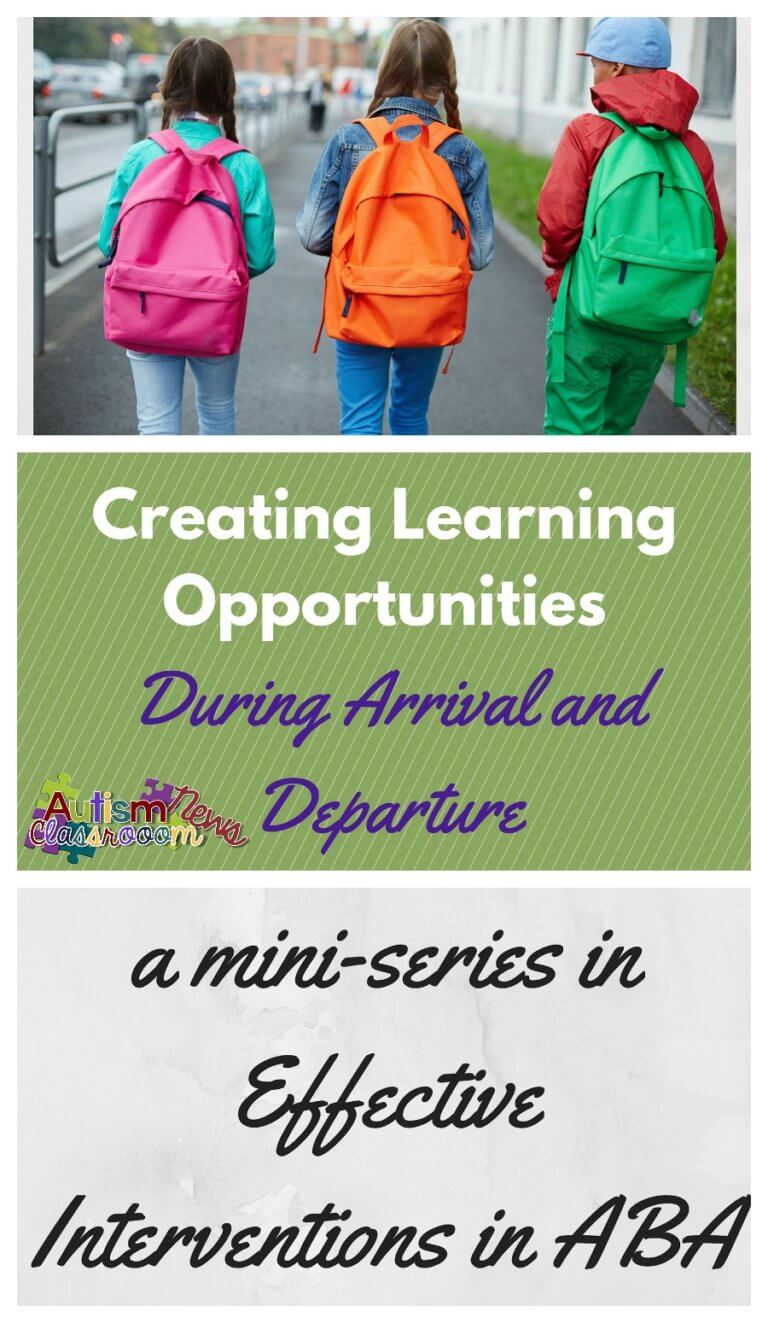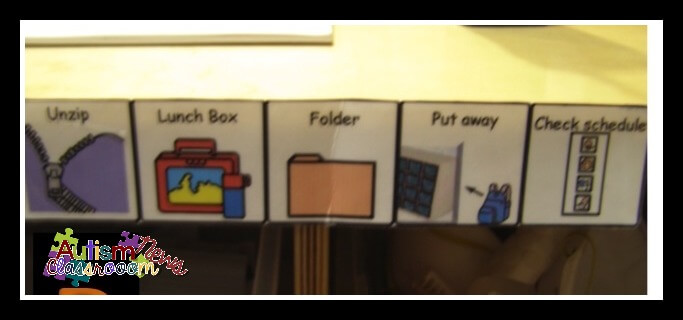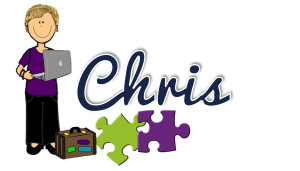Continuing with the mini-series of creating incidental teaching opportunities, today I am focusing on opportunities that can be created during arrival or departure. (And remember I’ll have a free printout for you to use in your classroom when the series is finished). So let’s jump right in!
Arrival and departure are most often dominated by the procedures that need to take place from unpacking to packing up. However, there are several ways to create opportunities for teaching new skills that can be built into these routines. The beauty of these routines is that once everyone gets used to them, the teaching opportunities come automatically. And you can easily add some visual prompts for both the students and the staff to make sure they happen.
1. Responding to Greetings
Probably the most obvious skill that can be embedded into the morning or afternoon routines is greetings. Within a classroom, students are typically at different places with greetings. Some are learning to respond when the adult greets them. Some are learning to initiate that greeting on their own. It’s important that the staff know which of these the student is working on because it makes a difference as to whether you say hello to the student or you wait for him to say hello to you. I have found that it’s important to resist the urge to say, “Say good morning” because unfortunately we don’t fade that well and students don’t learn to respond to our greeting–they learn to respond to “say good morning.” I use a visual of someone waving or even a short discrete wave if the student doesn’t respond.
Staff Tip: Make sure that staff knows to get on the child’s eye level BEFORE greeting the student. And then that they wait for the student to respond before giving the visual or gestural prompt. Establish a time period for each child for waiting (some take longer to process than others). Then move through the prompting hierarchy and move on.
2. Initiating Greetings
I really like the morning routine in particular for initiating greetings because they are a bit ambiguous at other times of the day. Those of you who are old enough might remember the Seinfeld episode about when are you obligated to greet someone always comes to mind. If you already said hi, are you required to say it every time you pass the person in the hall? The morning is the first time you see the student that day–that is a natural opportunity for a greeting. The easiest way to set up the opportunity for initiating is to establish a time in the routine when the greeting will be expected. Provide visual cues if needed, like the ones I mentioned for responding to greetings. Then wait. If you put it at the same time during the morning then the cue becomes a bit clearer. You can mix it up later. A good key is to try to fit initiating into the routine right before something the student likes to do so he gets a natural reinforcer (no, your saying hi may not be his reinforcer) for completing the task. The sets it up so there is a motivation to give the greeting to do what he wants to choose.
3. Sequencing activities (for morning or afternoon routines)
I don’t know about you, but my morning routine is pretty, well, routine. I do the same things in the same order. That’s because each step cues the next one. I’m not a morning person, so without that routine, who knows how I would get out the door. The morning routine of checking in to the classroom, putting their notebooks in an established place, taking their lunchbox out of their backpack, etc. is a great opportunity to have the student work on following a sequence of steps independently. Many of our students take many repetitions to learn those types of skills, so this is something he or she practices every morning. If he can follow the morning routine with or without a schedule, try asking him questions about the routine and work on him telling you the steps or narrating them as he follows them. Or block his access to a step (e.g., move the place he puts his notebook or lunchbox) so he has to ask for help or solve the problem.
4. Writing Name / Clocking in
For younger students I love to have them sign in for the day. This might be finding their name or picture, tracing, writing, or typing, but somehow practicing checking in with his/her name. Like initiating greetings, I like to set it up so they sign in to an activity they enjoy. Again, then there is a natural reinforcer and a natural opportunity. For older students I might work on having the sign in or I might have them clock in for the day. These days it’s easy to set up a tablet with an app for the student to clock in for the day in way that simulates a work place.
5. Fasteners (backpacks, coats)
And of course the arrival and departure routines are great opportunities to work on dressing with coats and zippers on backpacks. I started working in schools in New York where most of the year we had jackets with zippers or snaps to practice. When I moved back to Florida we had to improvise–for those of you who don’t have weather that lends itself to jackets, art smocks can be a great substitute.
Staff Tip: Make sure the staff knows which fasteners the student can or can’t do on his own, or you will find them helping the students when they don’t need it because they are trying to move it along. Also make it clear which ones you are targeting so they know when to wait and when to do it for or with them.
I will be back on Wednesday with the next activity for natural learning opportunities. What are your favorite skills to target during the arrival and departure routines? I would love to hear them!
Until next time,






![Summer resources to help survive the end of the year in special education [picture-interactive books with summer themes]](https://autismclassroomresources.com/wp-content/uploads/2018/05/SUMMER-RESOURCES-ROUNDUP-FEATURE-8528-768x768.jpg)

